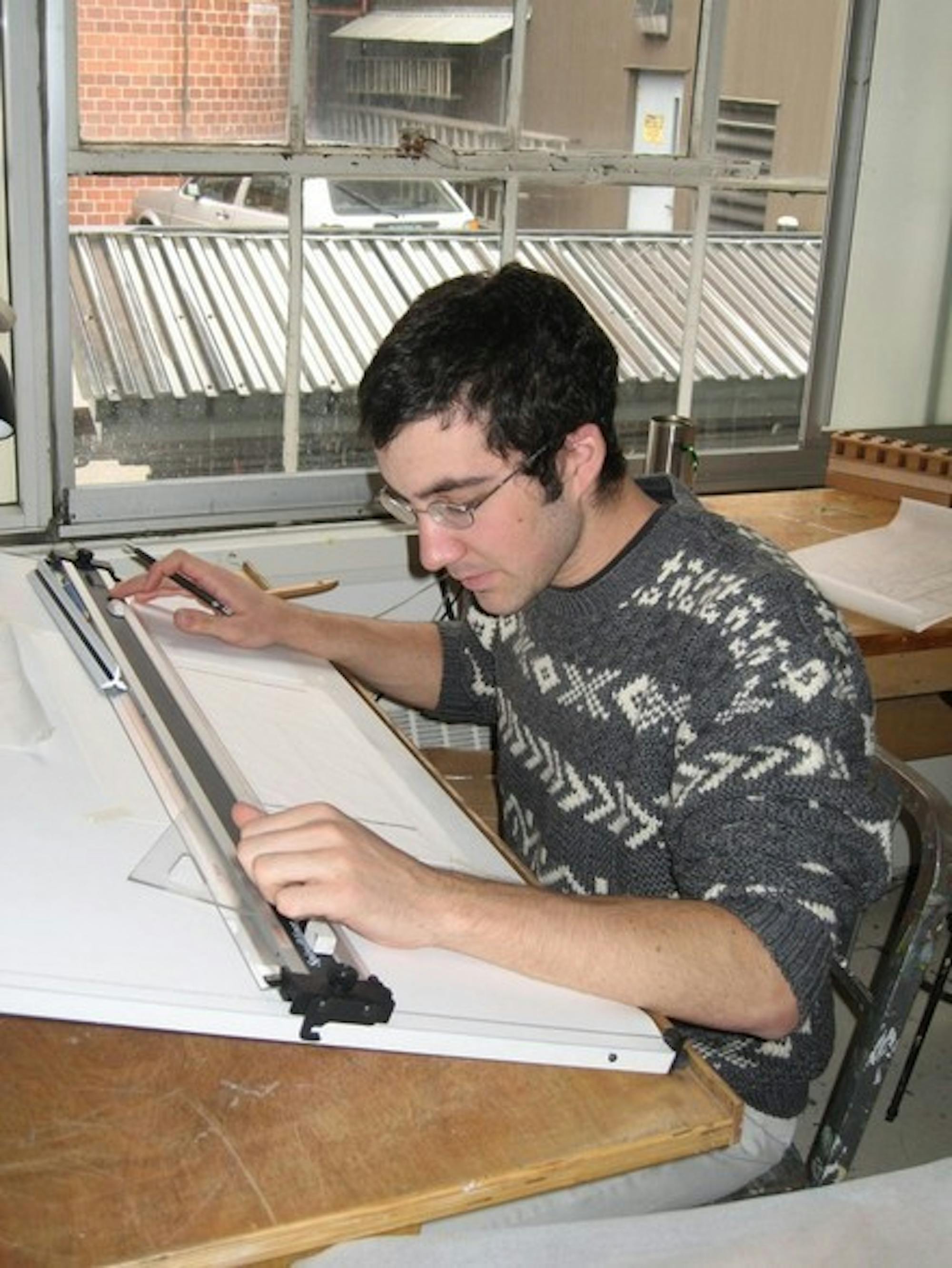Most seniors spend their Fall term panicking over endless resumes while juggling theses. The sudden realization of their upcoming introduction to the real world throws most of them into a frenzy. Tom Bonamici '07, however, is a bit ahead of the game. His longtime passion for architecture has now translated itself into a studio art independent study that could end up with Bonamici truly leaving his mark on Dartmouth's campus.
The Dartmouth met with Bonamici at Collis Cafe for an interview.
The D: Let's talk about the project you're working on.
Tom Bonamici: I'm doing an independent study with [Director of the Student Art Exhibition Program] Jerry Auten. I'm designing a new workshop/garage for the Dartmouth Outing Club on a site at Oak Hill, one mile north of campus. It'll house a few functions: partly a garage for ski trail grooming equipment, partly a workshop for Cabin and Trail to store trail-work tools, make trail signs, and do other woodcraft projects. The current shop is far too small and lacks running water and proper ventilation for painting.
The D: How did you get involved with this project?
TB: My original idea for an independent study was to create an abstract small library for a college of about 1,000 students, involving this many books, of these dimensions -- it would be very vague. I've already taken Architecture I, II and III in the studio art department. I didn't want to just be involved in the abstract side of architecture, but get involved in a real life project where I could ask as many questions as possible -- a project with a lot of limitations on it.
I'm really involved with Cabin and Trail, and I've done two outhouses and one trail shelter for them. Timber framing, it's really glorious stuff. I worked with a local timber framer on these projects, Ira Friedrichs.
In talking with the administrators last spring, I learned of the need to rebuild this Outing Club workshop. I proposed the idea, and I said to them, "It's a win-win situation. You get a free building design and you could say yay or nay." If OPO [Outdoor Programs Office] likes it, then it would probably start getting built next year.
The D: What is the design of the building going to be like?
TB: It's a timber frame building because that's the construction method I'm interested in. I'm looking to see that the circulation and the workspace are the most important features and to let the problematic necessities, such as big vehicles like the snow groomer, drive the design. We're taking this building that needs to take on a lot of functions and making it as simple as possible without oversimplifying it. I care most about the function of the building, how it responds to the land, and what works and what doesn't work.
The D: Are there any buildings on campus that "work" particularly well?
TB: I really love Baker library and I really don't like Berry. Robert Venturi added on Berry in the '90s. He really kind of raped and pillaged the original library. The original Baker library was just beautiful.
The D: What's your favorite work of architecture?
TB: I really like the Stockholm Public Library, designed by [Erik] Gunnar Asplund. And Exeter Library, designed by Louis Kahn. I love buildings that are as simple as they possibly could be without compromising the function or the aesthetic. I guess I don't have too much patience for extremely theoretical designs that don't work out.
The D: So I'm guessing you're not a fan of Frank Gehry.
TB: Don't get me started; I'd dig myself into a hole. His works are about self-promotion and pure aesthetics. You can't tell what his buildings are made of or what they're for. I think the ultimate test of a building is how well it does against the test of time. Some people think the work is done when it's built; I think a building is done when it's torn down. If it lasts 200 years, and it's still in constant use, and it still functions in all the ways it's supposed to, that's the ultimate success.
The D: What's the next step? What are some other projects you want to work on?
TB: I might be able to, depending on if the program selects the building, work on another independent study to work out the logistics of the building, actually hammering out the details of how the building is going to come together. Later on in my life, I would want to work as a timber framer for a couple of years, probably in this area, and go to grad school. I know whatever I do, I want to work with buildings.
I would love to design a monastery. It's a very unique and different institution, just an interesting challenge. To approach something spiritual in a building, that's something really great. And, of course, a library.




